
Hayato Ikeda was a Japanese bureaucrat and later politician who served as prime minister of Japan from 1960 to 1964. He is best known for his Income Doubling Plan, which promised to double Japan's GDP in ten years.

Takeo Fukuda was a Japanese politician who served as Prime Minister of Japan from 1976 to 1978. A member of the House of Representatives from 1952 to 1990, he was part of the Liberal Democratic Party from its foundation.

Inejiro Asanuma was a Japanese politician and leader of the Japan Socialist Party. During World War II, Asanuma was aligned with the Imperial Rule Assistance Association and advocated for war in Asia. Asanuma later became a forceful advocate of socialism in post-war Japan. He was noted for his support of the newly established People's Republic of China (PRC) as well as the criticism of United States–Japanese relations, making him a polarizing figure.

Douglas MacArthur II was an American diplomat. During his diplomatic career, he served as United States ambassador to Japan, Belgium, Austria, and Iran, as well as Assistant Secretary of State for Legislative Affairs. He was the nephew of the U.S. general Douglas MacArthur.

Otoya Yamaguchi was a Japanese right-wing ultranationalist youth who assassinated Inejirō Asanuma, chairman of the Japan Socialist Party, on 12 October 1960. Yamaguchi rushed the stage and stabbed Asanuma with a wakizashi-like short sword while Asanuma was participating in a televised election debate at Hibiya Public Hall in Tokyo. Yamaguchi, who was 17 years of age at the time, had been a member of Bin Akao's far-right Greater Japan Patriotic Party, but had resigned earlier that year, just prior to the assassination. After being arrested and interrogated, Yamaguchi committed suicide while in a detention facility.
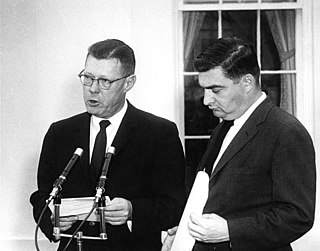
James Campbell Hagerty served as the eighth White House Press Secretary from 1953 to 1961 during the Presidency of Dwight D. Eisenhower. He was known for providing much more detail on the lifestyle of the president than previous press secretaries; for example, he covered in great detail Eisenhower's medical condition. Most of the time, he handled routine affairs such as daily reports on presidential activities, defending presidential policies, and assisting diplomatic visitors. He handled embarrassing episodes, such as those related to the Soviet downing of an American spy plane, the U-2 in 1960. He handled press relations on Eisenhower's international trips, sometimes taking the blame from a hostile foreign press. Eisenhower often relied on him for advice about public opinion, and how to phrase complex issues. Hagerty had a reputation for supporting civil rights initiatives.
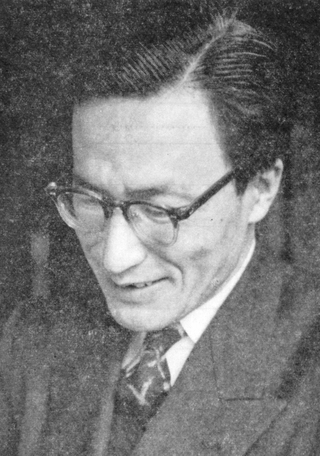
Masao Maruyama was a leading Japanese political scientist and political theorist. His expertise lay in the history of Japanese political thought, to which he made major contributions.
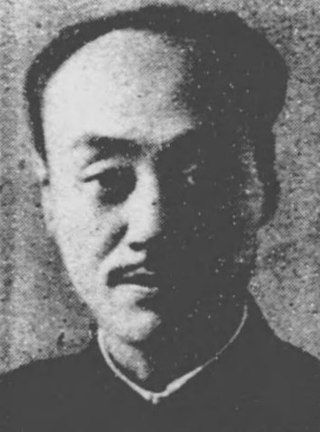
Bin Akao, was a Japanese far-right politician who served as a member of the House of Representatives of Japan during World War II.
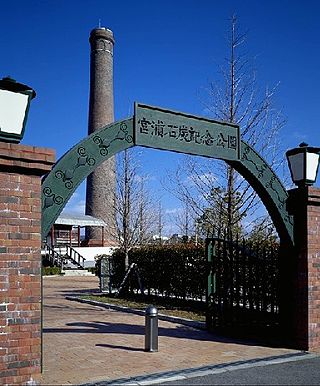
Miike coal mine, also known as the Mitsui Miike Coal Mine, was the largest coal mine in Japan, located in the area of the city of Ōmuta, Fukuoka and Arao, Kumamoto, Japan.
Kazutaka Komori was a Japanese right-wing ultranationalist youth who attempted to assassinate Japanese journalist and magazine publisher Hōji Shimanaka in February 1961, in what became known as the Shimanaka Incident. Komori sought retribution for a fictional story published in one of Shimanaka's magazines which featured a dream sequence in which the Emperor and Empress were beheaded by a guillotine. Shimanaka was away from home at the time of Komori's assault, and he ended up stabbing Shimanaka's wife and murdering his housemaid. Komori was 17 years old at the time of his attack.

Ichirō Kōno was a Japanese politician during the postwar period who served as Deputy Prime Minister and a member of the National Diet. As Deputy Prime Minister, he was in charge of the 1964 Tokyo Olympics. In the 1950s and 1960s, he was the head of the powerful "Kōno Faction" within the ruling Liberal Democratic Party. Kōno aspired to become prime minister, but although he held a large number of important party and cabinet positions, reflecting his power and influence, he was not able to rise to the premiership before his death in 1965.

Michiko Kanba was a Japanese communist, University of Tokyo undergraduate, and a Zengakuren activist. She died in clashes between demonstrators and police at the South Gate of the National Diet Building in central Tokyo at the climax of the 1960 Anpo Protests against the US-Japan Security Treaty.

The Anpo protests, also known as the Anpo struggle in Japanese, were a series of massive protests throughout Japan from 1959 to 1960, and again in 1970, against the United States–Japan Security Treaty, which allows the United States to maintain military bases on Japanese soil. The name of the protests comes from the Japanese term for "Security Treaty," which is Anzen Hoshō Jōyaku (安全保障条約), or just Anpo (安保) for short.
The Shimanaka incident, also known as the Furyū mutan incident, was a right-wing terrorist attack which took place in Japan on 1 February 1961, as well as the resulting nationwide debate that surrounded it. After Japanese author Shichirō Fukazawa published a short story in the magazine Chūō Kōron which featured a dream sequence depicting the beheading of the Emperor and his family with a guillotine, a 17-year-old rightist named Kazutaka Komori broke into the home of Chūō Kōron president Hōji Shimanaka, murdering his maid and severely wounding his wife.

The U.S.-Japan Alliance is a military alliance between Japan and the United States of America, as codified in the Treaty of Mutual Cooperation and Security between the United States and Japan, which was first signed in 1951, took effect in 1952, and was amended in 1960. The alliance has further been codified in a series of "administrative" agreements, "status of forces" agreements, and secret pacts that have not been subject to legislative review in either country.

On 12 October 1960, Inejirō Asanuma, chairman of the Japan Socialist Party, was assassinated at Hibiya Public Hall in Tokyo. During a televised debate, 17-year-old right-wing ultranationalist Otoya Yamaguchi charged onto the stage and fatally stabbed Asanuma with a wakizashi, a type of traditional short sword. Yamaguchi committed suicide while in custody.
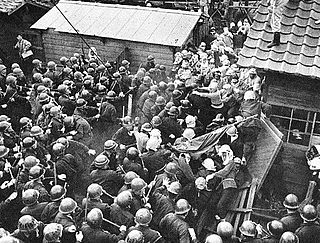
The Miike Struggle was a year-long struggle in Japan in 1960 between the organized labor movement, backed by a variety of left wing groups, and big business organizations, backed by the Japanese right, centering around a lengthy labor dispute at the Mitsui Miike Coal Mine on the west coast of Kyushu in southern Japan. Occurring at the climax of a long series of escalating strikes and other militant labor actions in 1950s Japan, the Miike Struggle was the largest labor-management dispute in Japanese history. Ultimately, the labor movement in Japan was defeated at Miike, dealing a significant blow to its prospects going forward.

Suehiro Nishio was a Japanese labor activist and party politician whose career extended across the prewar and postwar periods. A long-serving member of the National Diet, he was a power broker in the Japan Socialist Party and one of the main leaders of the Right Socialists. He served as Deputy Prime Minister of Japan during the cabinet of Hitoshi Ashida, and in January 1960, he led a breakaway faction out of the Japan Socialist Party to found the new Democratic Socialist Party.

Saburō Eda was a Japanese party politician, prominent in the postwar period, who served two terms in the Member of the House of Councillors and four terms in the Member of the House of Representatives, and rose to become Secretary General and Acting Chairman of Japan Socialist Party in the early 1960s. Eda's optimistic "Eda Vision" of a broad-based, moderate form of socialism briefly won acclaim from the Japanese mass media before being beaten back by hardliners in the left wing of the party. He is the father of Japanese politician Satsuki Eda.
The Association of Neutral Labour Unions, better known by its Japanese abbreviation Chūritsu Rōren, was a national trade union federation in Japan from 1956 to 1987.


















